CASA BLOGS

Special Edition | Women In Maharashtra Lived To Tell Their Tale
The helpless farmers are out of solutions in Maharashtra. The drought has caused water scarcity to such an extent that women have to stand in long queues and travel long distances to gather portable water – leave alone the water needed for irrigation. Sometimes they are hit by heat strokes leading to fatal heath conditions. CASA Reporters journey into India’s worst drought-hit districts of Maharashtra and gather some breakthrough insights from farmers living on the edge of agrarian crisis. During our reporting period, we collected striking conversations with farmers bringing us close to their struggles; also a bit closer to women farmers who became motivation for others.
There are stories, issues and challenges in our modern day lives that needs to be read.
And we bring them to you.
READ & CONTRIBUTE
MAIL US AT communications@staging152.beforegoinglive.com TO SUBSCRIBE CASA in Action.
__________________________________
MISSION: STAYIN’ ALIVE

By Isha Banerjee | Reporter – CASA Communications
“I think of drought in India, I think of Maharashtra.”
To find some answers for ourselves, CASA reporting team travelled to the two worst drought affected districts of Maharashtra – Latur and Yavatmal. Both these districts fall under Marathwada and Vidharbha regions that always make their way into newspapers specially during summer and monsoon seasons; all for wrong reasons. To find a few answers, CASA reporting team took on a journey to the worst drought affected districts to understand the problem situation.
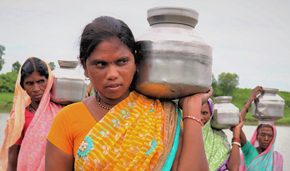
It was almost dusk in the lush green farms of India’s western state Maharashtra while travelling from its capital city Mumbai to Latur when we witnessed farmers giving in their last drop of sweat before closing the day. We caught a glimpse of these famers from our window panes. How carefully they were nurturing every crop only to get “better prices in the local market.”
The time was monsoon August 2017 and the rainfall scanty. Heavy monsoon showers needed for better crops hadn’t been met. And we could feel the tension gripping these farmers. They were worried; what if they “don’t even get back the initial amount invested on the season’s harvest let alone the profit, and what if they were unable to repay their debt to the loan sharks.”
We interacted with a few farmers among who was 45-year-old Rekha Vishnu Jadav. On being asked about the drought conditions in her region and the struggles of women fetching water she said, “There is a well nearby from where the women get portable water. However, as the entire village is dependent on the source the water runs dry during high demand. We carry multiple buckets with us and to walk for kilometres to fetch water. In summers the women go through heat strokes. From legs to shoulders to head, every inch of the body pains. When I take ill, my daughters do the refilling for me because we need water at any cost.”
She took us to an exhaustive walk to the nearest water well that was 10 kms from her house and alarmingly almost 150 feet deep running out dry. Over nine-tenths of groundwater in India is extracted for irrigation, according to the Ground Water Year Book for 2014-15 released by the Central Ground Water Board (CGWB).
Changes in weather pattern have caused erratic rainfall across the region forcing farmers to depend excessively upon government schemes, irrigation facilities and money from loans sharks. “I grew up as a farmer. Back then the only reliable thing we were dependent was nature, received abundant seasonal rainfall. But now we are going through grim farming seasons. The input is huge and the output is unsure. Groundwater has already started depleting,” said Madhav Kale, an ex-sarpanch of Sheldara village, Latur.
__________________________________
“My husband died because rains were untimely”
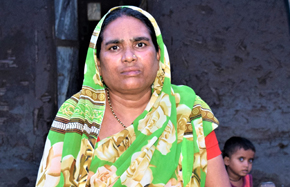 The year was 2012 and it was about 9.30 at night when Yashoda Uttam Pawar become anxious about her husband’s return. “He was not in the right mood that day. He returned home at six in the evening after slogging the day in the farm and told me he was going nearby for some work. Little did I know about his intentions,” she said.
The year was 2012 and it was about 9.30 at night when Yashoda Uttam Pawar become anxious about her husband’s return. “He was not in the right mood that day. He returned home at six in the evening after slogging the day in the farm and told me he was going nearby for some work. Little did I know about his intentions,” she said.
Just a weak back, Yashoda and her husband Uttam Pawar bought seeds worth Rs. 10,000 from the local market even though the predictions of delayed monsoons were on alert in most districts of Maharashtra.
It was a huge investment risk they were taking together – knowing the fact that the monsoons were delayed and government sounding red alert on drought. However, the hope to “make it through this lean season” does not wash away from a farmer very easily.” Every year farmers take risk – success or failure is dependent on variety of natural and man-made reasons.
Unfortunately, for Yashoda’s husband the risk was a failure as timely showers did not bless his region. Monsoons arrived late and rainfall was scanty in Niknagar village of Yavatmal district which is dependent on rain and groundwater.
“When I came to know about the incident, I was in denial but then I rushed to my kitchen and confirmed he might have done this to himself,” Yashoda said with tears in her eyes. A 50 ml of concentrated pesticide solution was missing from her kitchen. Her two adult sons hurried to their farm where the incident was reported by the passer-bys. “That was a dark day of my life and I wish I could be with my father in the field to talk him out of this,” said Yashoda’s son said.
Upon being asked whether she knew why her husband would take his life, Yashoda pats her forehead and replied, “No, I don’t know why he ended his life this way. He could have seen his grandkids grow with us. We were under immense pressure to pay back debts and maybe he took the blame on himself for the consecutive failure of crops.” Uttam Pawar is one among several farmers in Maharashtra who ended their lives owing to the agrarian burden and increasing debts.
__________________________________
WINDS OF CHANGE:
THE INTERVENTION BY CASA IN MAHARASHTRA
In 2013, CASA started its intervention in Marathwada and Vidharbha with livelihood and Comprehensive Food Security (CFSP) programmes as a response to the ongoing farmers’ suicide in these regions. The main motive was to enhance capacities towards adopting low cost sustainable agricultural practices and diversified livelihood resources. The organisation also wanted to improve land and water resources for the distressed small and marginal farmers.
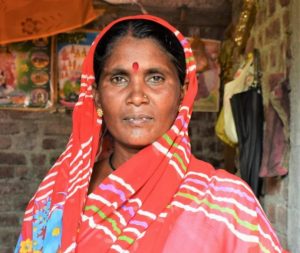
CASA developed a model wherein the farmers – specifically women farmers – could make the most benefit. “We took up a pilot project with three villages in Yavatmal district which was reeling under serious drought conditions. We are particularly looking for sustainable livelihood for the communities. We started to develop land-based and water-borne initiatives and support them in various livelihood options through farming and off- farming activities. We gave them the seed funding and support to help them start various small-scale activities so that they don’t have to reel under stress during severe drought,” Thomas said.
Joycia Thorat, CASA Project Officer (West Zone), gives an interesting insight on who are these ‘women farmers of Maharashtra’ and how did they become synonym for development in their villages. “Most of the time when we think of farmers, we think only of men. But when we worked in Yavatmal, we found that there were a lot of women farmers and also women who were a part of the agriculture industry. They were doing subsidiary work. They were saving, they were supporting each other when one had a need and that was our biggest success at the time of crisis,” she said.
After intervening in the village of drought prone Yavatmal, CASA responded to the farmers’ suicide in the region & adopted low cost sustainable agricultural practices to support the farmers in stress. Goat rearing became a primary livelihood option for the widows & the villagers during periods of low income. Now Narbada is an active member of Self Help Group (SHG) who motivates & mobilises more women specially widows to join the group so as to become self sufficient & free from distress.
__________________________________
COMING BACK TO LIFE
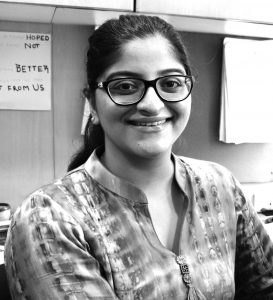
By Kasvi Khosla | Intern – CASA Communications
Nervous at first, Surekha Raju Yere didn’t see the interviewers eye-to-eye. After a lot of discussion her freckled face lifted up a little and very hesitantly she uttered “The agricultural system has failed us”.
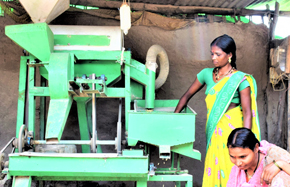
Perhaps, she was reluctant in speaking her heart out in front of other women in the community meeting. The women informed us that Surekha is quite submissive when it comes to raising issues at the meetings. However, she did open up to CASA reporters and shared some of her insights on how she struggles to make her needs meet having lost her husband to debt burden and managing the agriculture all by herself.
2013 was the year of worst drought to have hit Maharashtra in 40 years. As the drought and debt continued to drive farmers towards suicide in the state, women farmers had to take the fate of their families in their hands.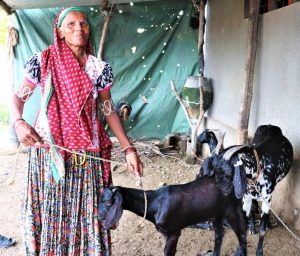
Surekha has three children, a girl who is 16 and two boys who are 14 and 12 years of age. She still does not clearly understand the cruel motive behind what drove her husband to end his life in 2016. However, she believes that it was the “tremendous pressure of drought-hit farms and huge burden of debt from the landlords that made him believe that ending life would be much more peaceful than going through the torture.” Since then, life for Surekha has not been able to stabilise. “I am a daily wage worker and my household survives on the income. But I do not get paid on the days when I have to travel miles to fetch water,” she said..
Another woman farmer in the village, Sumitra Bhagwat – a mother of two – says, “The agriculture has massively failed due to the persistent drought.” Her husband was a farmer but now he works as a cobbler in a nearby city. Sumitra thinks that being a cobbler is better as it provides them with “some money than nothing”.
Sumitra, with the help of CASA, formed a Self-Help Group (SHG) in the Chera Village of the Latur district of Maharashtra with 20-25 women in the committee. These women farmers were given orientations on how can they tackle the situation of drought within their regions.
__________________________________
KIRIBATI: A PARADISE TO BE LOST

By Md Mahfooz Alam | Intern – CASA Communications
Environment experts predict that a small island country in the South Pacific Ocean called Kiribati is the first endangered land on the face of earth; it may be wiped out in 20-40 years. The tragedy is that Kiribati is not responsible for its misfortune. The uncontrollable greed of the western countries is to be blamed.
 In defense to Kiribati’s raising sea level, the government has already purchased land in Fiji to give refuge to its people. Climate change is national priority of the government. Kiribati is an island of 33 atolls of which 20 are inhibited. The narrow unprotected land are scattered and spread between Hawaii and Australia. More than half of population is concentrated in Tarawa atoll.
In defense to Kiribati’s raising sea level, the government has already purchased land in Fiji to give refuge to its people. Climate change is national priority of the government. Kiribati is an island of 33 atolls of which 20 are inhibited. The narrow unprotected land are scattered and spread between Hawaii and Australia. More than half of population is concentrated in Tarawa atoll.
These atolls are on average 2 meters above the sea level. The frequent flood and storm surges are devouring the land. The people are building seawalls of corals and concrete but once there is storm it smashes these walls. The government lacks funds to protect its citizen from indefensible sea anger.
In an exclusive coverage on Kiribati: A Drowning Paradise by DW documentaries, Joy Eating – an official climate commissioner in Kiribati since 2010 –talks about alarming situation. “It is warned that the community has to live in these conditions. There would be sanitation problems and contamination of the drinkable water. Right now we don’t really have a king tide but imagine when it does come these little seawall is fully submerged by water,” he said.
Everyday Tatawa and his three brothers have to carry fishing boat into the sea, “as this area is flooded, it used to be a beach. Now we have to move our boat everyday otherwise it would get smashed.” The family defies the rising sea levels with a coral wall that resembles a fortress. “Eventually the land will disappear but we’ll stay and float like an island.” His family has become symbol of struggle in Kiribati.
The documentary reports that the young people are aware of dire prospect in Kiribati. They are scared but they don’t want to leave their motherland, they are proud of their country, culture, identity and they want to preserve it. Besides building seawalls young people are involved in planting Mangrove sapling at sea coasts to protect the land from water invasion. They have planted more than fifty thousand Mangrove saplings.
__________________________________
“THE EARTH HAS MUSIC FOR THOSE WHO LISTEN”
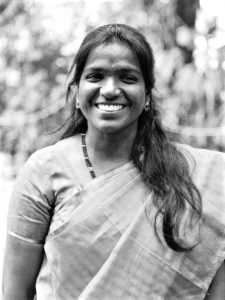
By Joycia Thorat | CASA Project Officer
Seventy percent of the 1.3 billion people in the developing world who are living below the threshold of poverty ,are women. India ranks 87th of 144 in the gender gap report of 2016 which covers health , education, politics and economy. India is 3rd from bottom of 144 countries in health .These deprivations are directly and indirectly connected to sustainable livelihood and vice-versa if one understands sustainable livelihood in a comprehensive manner.
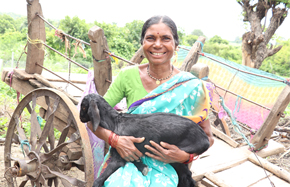
For poor to achieve sustainable livelihood , their knowledge, perceptions, and interests should be heard. Economic growth does not automatically bring livelihood opportunities for poor as it depends on the capabilities to take advantage of economic growth. Poverty is not just a question of low income, but also includes other dimensions such as bad health, illiteracy, lack of social services, etc., as well as a state of vulnerability and feelings of powerlessness in general.
As poor know their situation and their needs better it is important to involve the poor in the design of policies and project intended to better their lot. How often women are consulted on matters as important and basic as livelihood by policy makers or even at household. Sustainable livelihood is a holistic combination of physical and natural resources , also social and human capital. Many a time it is denied to poor due to the power relations. Achieving sustainable livelihood is a “transforming process” as it assess and questions the power relations. Gender is one such aspect of social relations and as a great extent the relation between men and women are characterized by marked inequality and social domination, they obviously form part of the problem. We can add class, race, religion , ethnicity to this list.
CASA in all it’s programmes uses the transformative approach . The Comprehensive Food Security Programme in Yavatmal District of Maharashtra to combat farmers suicide is an excellent example . CASA realized majority of rural women are engaged in agriculture and its allied sector . Though engaged in farming , they were not recognized as farmers . In the larger policy scenario, in discussions, plans and implementations they are left out which further affect their sustainable livelihood.
Featured Post
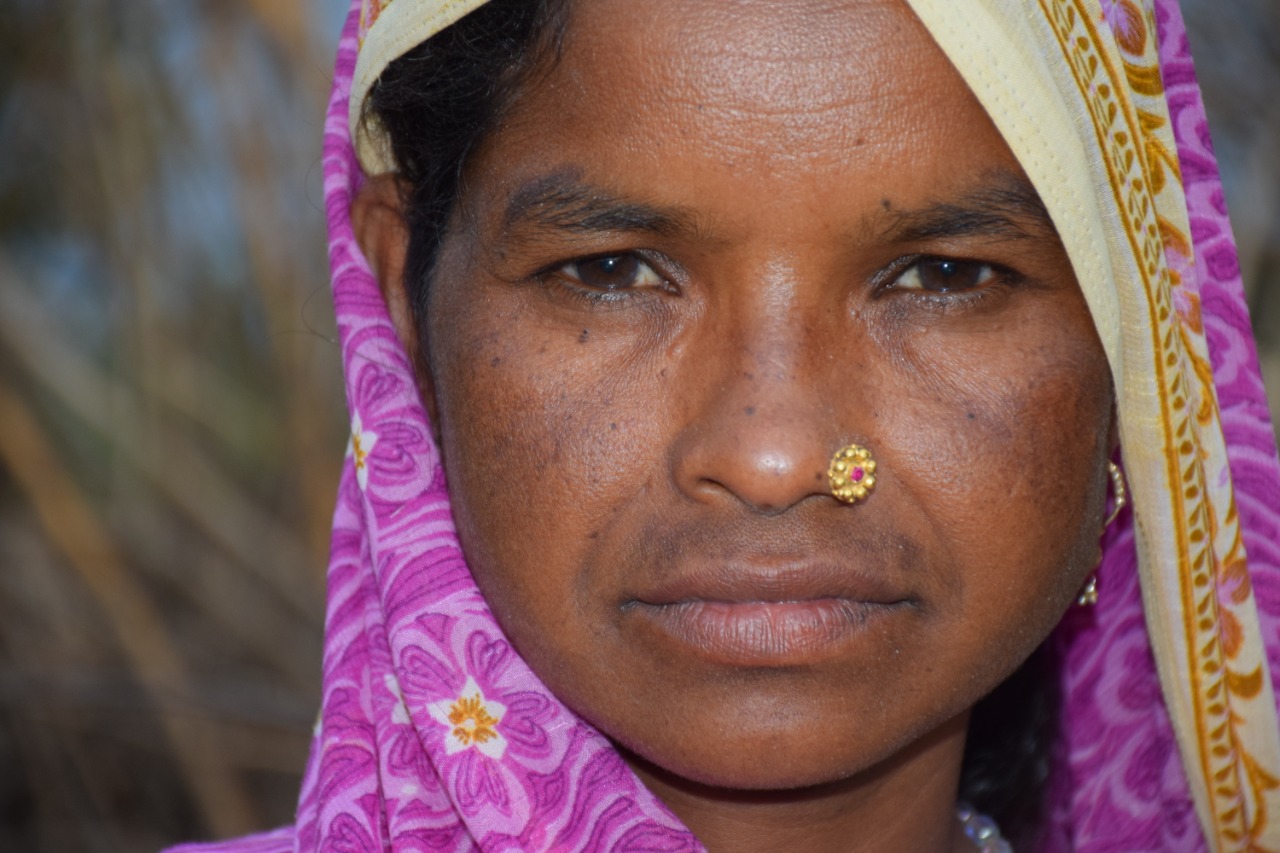
Mental Health Awareness in India: Addressing Key Challenges
8 Nov 2024
Mental health awareness is crucial in India, where millions silently struggle with mental health disorders, including depression, anxiety, and bipolar disorder. Despite growing recognition, India faces unique challenges in effectively addressing mental health issues. The stigma associated with mental illness remains a primary barrier. In Indian society, mental health issues are often misunderstood, leading to […]

Ensuring Girls’ Safety in India: A Path Toward Empowerment
20 Aug 2024
Girls’ safety in India remains a critical issue that has garnered increasing attention over the years. Despite various reforms and efforts from both government and civil society, challenges persist. From street harassment to domestic violence, gender-based discrimination continues to limit the freedom and safety of girls. While significant progress has been made in addressing these […]
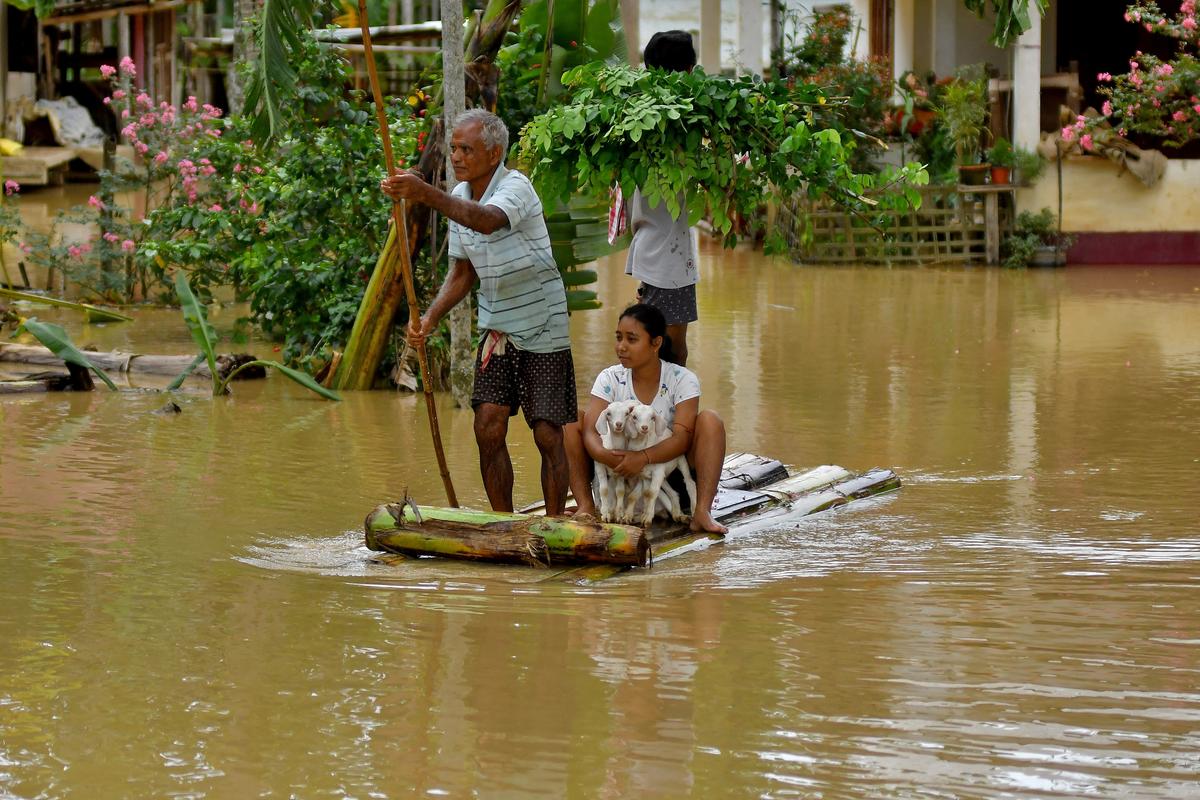
The Connection Between Monsoons and Floods in India: An In-Depth Analysis
9 Jul 2024
India, a land of diverse climates and geographical features, relies heavily on the monsoon season for its agricultural and water resources. However, with the benefits of the monsoon rains come significant challenges, particularly in the form of floods. This blog explores the intricate relationship between the monsoon season and flooding in India, providing detailed insights […]


 Previous Blog Post
Previous Blog Post 
